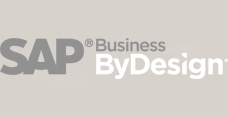Warehouse management improvements – the lifeblood of your distribution business (Part 1)
18 Jan 2016 | by Natalie This is part one of our two part blog to help you get better use of your ERP system for warehouse and inventory management.
This is part one of our two part blog to help you get better use of your ERP system for warehouse and inventory management.
If your business is in the wholesale, distribution sector you will no doubt understand that there is a direct correlation between inventory and warehouse management and your bottom line. For a small to medium sized distribution business inventory and warehouse management impacts every aspect of the business. Inventory management is a balancing act – hold too much stock and you risk the stock expiring or sitting on the shelf for months – costing you money. Hold too little stock and you risk lost orders and poor customer service levels through late delivery.
There is no perfect answer to the inventory and warehouse management debate but there are some technical and warehouse management software tools that can assist in making the right decision for your warehouse management:
- Get an accurate stock count and valuation. Without an accurate assessment of current stock levels any purchase planning and inventory forecasting is a waste of time. To start any accurate inventory planning you need to have reliable stock numbers in your ERP system. A good ERP solution can provide multiple tools to assist with stock accuracy:
- Cycle counts – use your ERP solution to recommend and conduct regular stock counts.
- Full stock take – if your current stock levels are not accurate use regular stock takes to measure stock levels and improvements in stock accuracy.
- Bin locations – put stock into bin locations to help with stock count and picking accuracy.
- Receipting – ensure an accurate and streamlined receipting process so that your warehouse team can quickly and accurately receive stock. If you have to receive stock by batch or serial number, consider using handheld scanners to reduce processing time and to increase accuracy.
- Dispatch – much the same as receipting – ensure an accurate process.
- Ensure the correct policies and procedures are in place for everyone in the business. It’s no use having a great ERP or warehouse management system in place if the sales team is allowed to take sample stock off the shelf without recording the transaction with a delivery note or other document to note that an outbound stock movement has taken place.
- Purchase Planning – if you are trying to manually run purchase planning with the use of multiple spreadsheets and visual counts in the warehouse the good news is that there is a better way. Good ERP solutions offer multiple purchase planning tools. A MRP (Material Requirements Planning) or purchase planning tool will balance your inventory levels with supply and demand to provide a forecast stock position and recommended purchase orders. There are some complex calculations to be worked through:
- Min / max stock levels;
- EOQ – Economic Order Quantity;
- Minimum order volumes;
- Lead times;
- Tolerances on lead times;
- Forecast demand;
- Actual demand (sales orders);
- Supply (current stock and open purchase orders);
- Buying cycle (days, weeks, months).
A good ERP system will work through all of these factors (and more) to provide you with an accurate forecast stock position and suggested purchase order planning.
- To complete the picture when considering your purchase planning for inventory most companies will want to consider forecast demand. This forecast demand can be seasonal or can have an even spread. Forecasting can be as simple as entering a forecast from MS Excel into your ERP solution or can be complex – with algorithms used to provide an accurate forecast based on historical sales. What you want is the ability to produce an accurate forecast to help with your inventory (and potentially your production) planning.
- Available to promise. On the phone to a customer and want to know when stock of a particular item or range of items will become available? Your ERP solution should provide you with an available to promise estimate. The available to promise estimate should give quick insight into current and “most likely” available inventory on a particular date based on proposed inventory movements. This available to promise estimator should also take into account current orders, delivery dates and open purchases.
- Expediting orders. It does not matter how good your warehouse management system is, at some point you will need to expedite an order from a supplier and / or to a customer. Make sure you have mechanisms in place to accommodate the requirement to expedite. This might mean different mechanisms for transport (airfreight rather than road freight) or might require the use of different suppliers. If you are going to airfreight certain orders let’s make sure that your ERP solution can record the impact on gross profit for those orders.
- Alternate items. At some point in time when a customer calls for an item of stock you will be out of stock of that item. Even with the best inventory planning solutions available there are sometimes unforeseen circumstances which lead to a stock out. When this happens have information about alternative items available so that you can offer your customer an alternative. An example might be a different brand that you stock or the same item that your customer wants but in a different packaging unit. Avoid losing the sale by offering an alternative item.
Thanks for reading……we hope you find this information useful. Part two of this blog will be published tomorrow.








Leave a comment